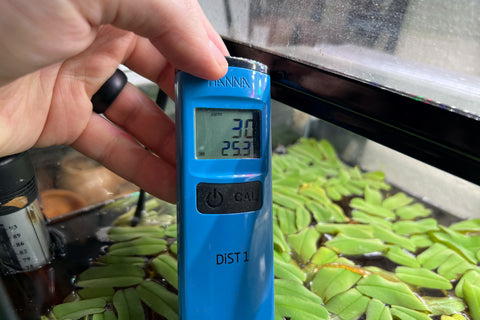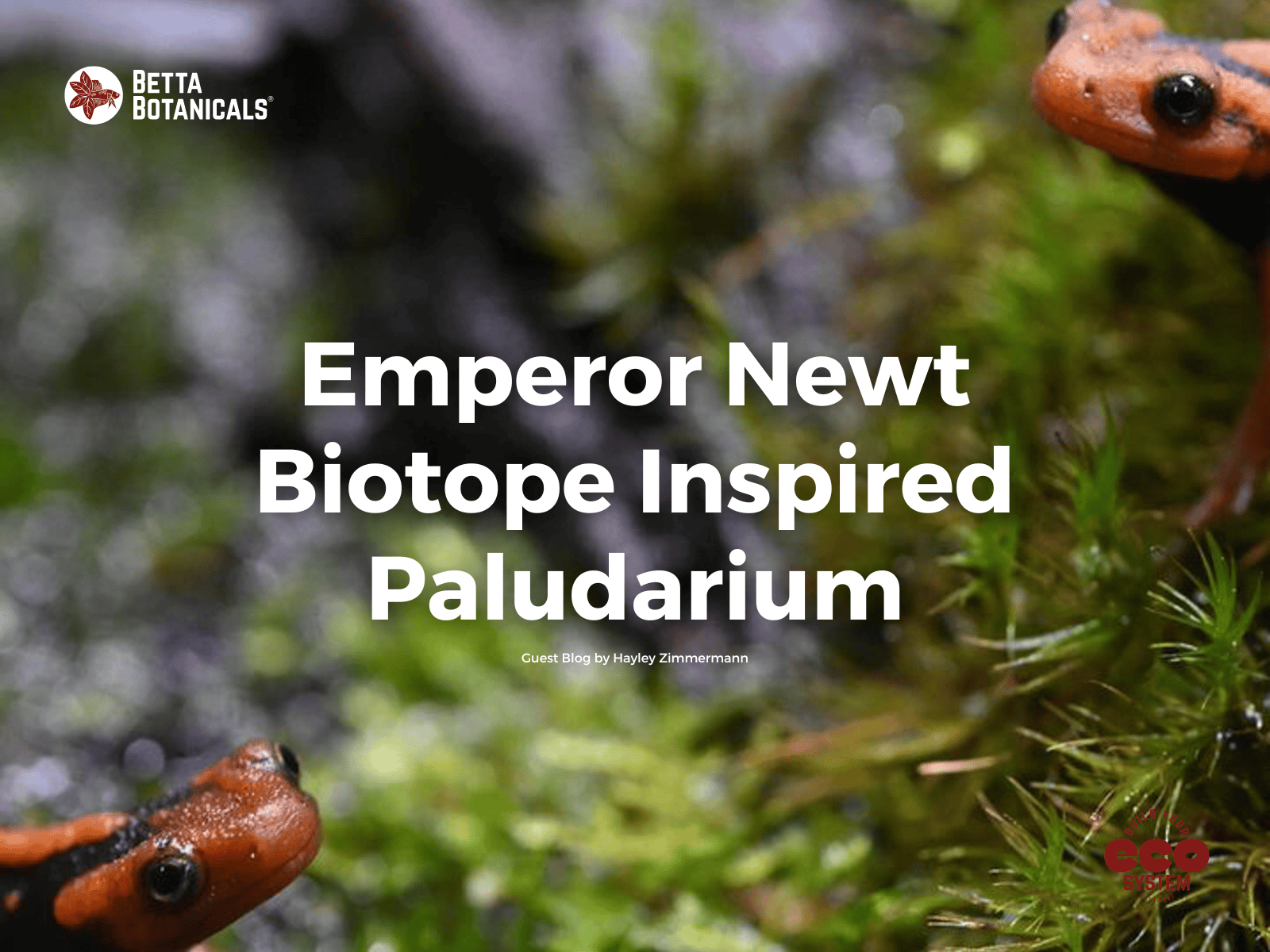Not All Bettas Like The Same Temperature
The betta genus contains 73 recognized species spread throughout Southeast Asia and the Indopacific. While these regions have relatively similar biomes, due to the spread of betta species, each species’ habitat characteristics like temperature and pH can vary significantly. It’s important to remember that different species diverged from each other to occupy specific ecological niches within aquatic habitats, and even though these all occur in tropical regions of the world, there are still slight habitat differences. Depending on the betta fish you keep, even wheather it is wild or domestic, your aquariums optimal temperature and pH will be a little bit different.

Climate of Southeast Asia & the Indopacific
Wild bettas are native to the tropical and subtropical rainforest biomes of Southeast Asia and the Indopacific. In the tropical rainforest, the average temperature ranges from 68 to 77 and the average rainfall can total nearly 400 inches a year! That is a LOT of rain!
Typical tropical rainforests can be divided into three layers - the canopy, the understory, and the forest floor. The forest floor is dark, and covered with wet leaves, sticks, and other leaf litter. This material decomposes rapidly due to the warm, damp climate. In this environment, bacteria, microorganisms, and decomposers thrive due to the abundance of food availability. Unsurprisingly, the biodiverse and biologically active freshwater ecosystems of Southeast Asia are the perfect home for many species of tropical fish.
Water Parameters for Domestic & Wild Betta Fish
Let’s explore the pH and temperature parameters for common domestic and wild betta fish in the aquarium hobby! It is aquarium industry standard that you place a heater in an area of the tank which will distribute heat evenly through the aquarium. We recommend placing the heater near the inlet of your HOB filter, or inside the aquarium filter compartment if it is built in.

Domestic Betta Splendens Temperature & pH
Domestic Betta splendens, the classic domestic betta, is the most common betta fish in the western aquarium hobby, and undoubtedly the entire world. Domestic Betta splendens are different from wild betta splendens in that they never existed in the wild, so we don’t have an ecosystem in nature to reference for their preferred parameters. However, because they are a species of betta fish, we know that they are most successful in tropical temperatures and soft, acidic water with moderate to high tannin levels.
Betta splendens prefer a temperature of 75 to 82 degrees Fahrenheit – among the warmer temperatures of the betta species. You can either purchase heaters preset to a temperature in that range, or an adjustable heater that you can set and monitor yourself. Some hobbyists recommend purchasing an adjustable aquarium heater, as having the ability to raise or lower the water temperature can help you treat different illnesses and account for the seasonal change in room temperatures of your home.

Betta Imbellis Temperature & pH
Betta imbellis – the peaceful betta or crescent betta – are a member of the splendens complex, like their cousin the domestic betta splendens, and require very similar water parameters. However, because this is a wild variety of betta, we can reference their native ecosystems for ideal water parameters and tank conditions. In their wild habitats (located in the marshlands of Thailand, Malaysia, and Sumatra in Indonesia), the pH can drop as low as 4.5! Betta imbellis tolerate temperatures between 72 and 80 degrees Fahrenheit and prefer dark, acidic ecosystems with plenty of hiding places. It is a long-standing myth that betta fish can tolerate room temperatures of 65-70 degrees Fahrenheit, but this is plainly false. Their immune and digestive systems have not evolved to tolerate such low temperatures.

Betta Macrostoma Temperature & pH
Betta macrostoma, also called the spotfin betta or Brunei beauty, is a large, rare species of betta native to Indonesia. Betta macrostoma prefers slightly cooler temperatures than other betta species and a slightly more acidic pH of around 4.4-5.7 which has been recorded at many catchment sites. To learn how to maintain pH ranges this low you can read our recent blog post on the benefits of RO water for aquariums. In a betta macrostoma tank, the temperature should be maintained right around 74-76 degrees Fahrenheit, as these fish naturally live in cooler hillside streams. For this species, an adjustable heater is a must. Most preset heaters for tropical fish are set to 78 degrees Fahrenheit, which can potentially be too warm. Make sure you also have a thermometer in your tank to monitor the conditions daily. Don’t be caught in a situation where your heater fails or overheats without noticing!

Betta Hendra Temperature & pH
Betta hendra comes to the aquarium hobby from the Sabangau River basin in Central Kalimantan on the island of Borneo in Indonesia. Unlike some other betta species, they inhabit very specific ecosystems – highly acidic tropical peat swamp forests. Peat swamp forests are flooded for the majority of the year and get their acidic properties from the acidic clay soil and high amounts of botanical leaf litter being deposited. At times, the pH can dip as low as ~3.0. These conditions prevent leaf litter from fully decomposing, creating a soft peat substrate underwater that’s nearly 60 feet deep! The tropical peat swamps of Borneo are incredibly biodiverse ecosystems home to a variety of endangered plants and animals, including the famous Arowana.
Peat swamps are the betta hendra’s native habitat, so we aim to recreate this environment in our home aquariums. Stick to temperatures between 74 and 80 degrees Fahrenheit and add PLENTY of botanicals to build up your soft, acidic substrate. Betta hendra prefers some of the most acidic water conditions of the wild betta species. Our long-time friend and master fish breeder, Sumer Tiwari, recommends that you keep betta hendra on the cooler side of 76 degrees as he has seen that it allows betta hendra to live longer in our home aquariums.

Slight Variation in Temperatures Between Species
Technically, all the betta species mentioned above live in similar parameters - tropical temperatures, with soft, dark, and acidic water. However, as you explore each species and its unique environment, you begin to notice subtle differences in temperature and pH. Depending on the fish you keep, it’s best to monitor and adjust your parameters to ensure success. Your best friends on your fishkeeping journey will be an adjustable heater, a thermometer, and a water testing kit. Keep in mind that wild bettas are a category, and if you are keeping bettas actually collected from the wild they will be pickier about the water temperatures you keep them in, while wild bettas bred in captivity for even one generation are more forgiving. When you’re ready to start building your ecosystem, we’re here to help! Our Betta Botanicals aquarium botanical variety pack is a great place to begin. Most bettas prefer soft, tannin-rich water and plenty of places to hide and relax. No matter which betta species you keep, we’re sure to have something to help your ecosystem succeed. Good luck, and happy fishkeeping.








Inspire your friends:
A Guide to Using RODI Water in Blackwater Aquariums
A Terrestrial and Aquatic Guide to the Monkey Pot